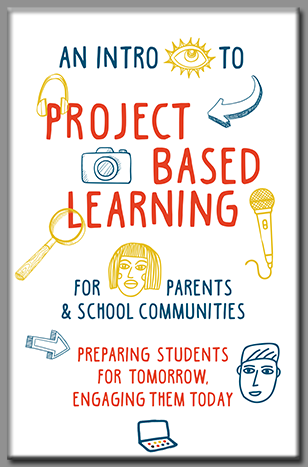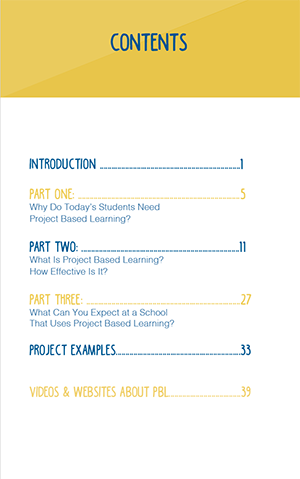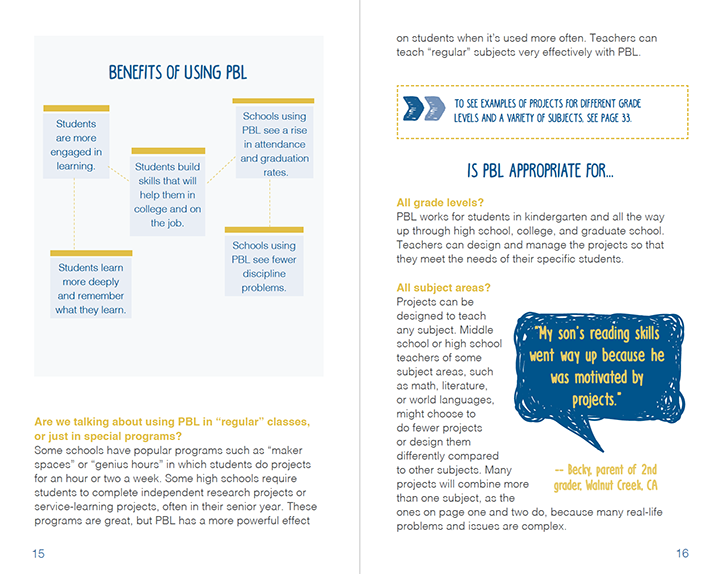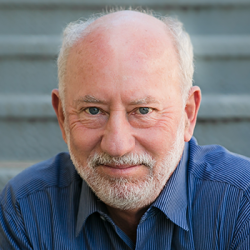
If you’re an educator, have you ever tried explaining some new program or teaching method to non-educators? Do their heads nod, but their eyes soon glaze over? Do you find yourself using edu-jargon that must sound (a) mystifying, (b) too wonky, (c) ridiculous, or (d) all of the above? Have you had this experience when explaining Project Based Learning?
If you’re not an educator, have you ever tried to understand an explanation of this new PBL thing a teacher or school or district leader is excited about, or been left with lots of questions?
If your answer is yes to any of the above questions, we’ve got a helpful new resource for you.
The Buck Institute for Education has just published a short, 40-page booklet that explains the “why and what” of PBL in a non-jargony, easily-readable style, with a colorful graphic design. An Intro To Project Based Learning: Preparing Students for Tomorrow, Engaging Them Today is now on sale in our online store. Quantity discounts are available, and it's offered in a Spanish translation.
Along with the why and what, the booklet talks about what a PBL school is like, and it has answers to FAQs and K-12 project examples in various subject areas.
Here's what you'll find inside...

We created this booklet mainly for K-12 parents, but it could be read by community and school board members, clerical/support staff at a school or district, and even older students. It would also come in handy if a school or district is reaching out to people in local business and industry, nonprofit organizations, or government to bring greater authenticity and real-world connections to its PBL efforts.
Why It’s Important to Build Understanding and Support for PBL
Everyone in a school-community needs to be on board with making a significant change in the teaching methods at a school. Even if a school is not moving to all-PBL-all-the-time and is “only” going to start with a couple of projects a year, it will seem different to students and parents, and requires an explanation. PBL represents a shift in thinking about what and how students should learn – pretty big stuff!
If parents are not supportive, a PBL initiative can fail; indeed it has failed in some places because communities were not prepared for it. Most adults today did not experience PBL when they were in school. Some may remember “doing projects” but as many readers of this blog know, that’s not the kind of Gold Standard PBL we’re talking about. Some parents and students may have done “projects” that were not well designed and managed, and found it a waste of time. There may be misconceptions about PBL being talked about in a community or floating around the Internet. Or, for many parents, PBL will be an unknown and they need basic information.
How We Make the Case for PBL
To inform our intended audience and address their concerns, we begin the booklet with the “Why PBL?” question. We talk about how many students are bored by school, or just going through the motions to earn a good grade. We describe what kind of people employers want to hire in the modern economy, and what skills and personal qualities help get students through college – and how PBL can develop them.
Then we tackle the “What is PBL?” question (which is not easy if you’re trying to avoid jargon) and explain that it is effective for all subjects and students, when done well. We answer many common questions parents might have about whether PBL is right for their child, and concerns about things like group work, grading, and test scores. There’s a brief part about the research supporting PBL, and a section on what you’d see at a school using PBL. Quotes from students and parents are sprinkled throughout.

Acknowledgements that couldn’t fit in the booklet...
I was the primary author of this booklet, but it was a team effort. I got valuable critique along the way from BIE colleagues Bob Lenz, John Mergendoller, Cris Waldfogel, Sarah Field, Rhonda Hill, Sarah Shannon, Meg Parry, Liam Bayer, and Donna Burk. A special shout-out to Catherine Meharchand, a non-educator parent at BIE who was always willing to provide advice from that perspective – and detailed and helpful editing of my writing to boot!
Outside of BIE, I appreciated the feedback from Aaron Brengard, principal of Katherine Smith School and member of the BIE National Faculty; Susan Schilling, former BIE board chair; and Bob Pearlman, 21st century learning consultant and long-time PBL advocate.
BIE’s publications coordinator Theresa Siliezar offered her sound opinions on the booklet’s design and capably managed the process for getting it to readers. Our director of marketing, Debbie Woo, had great ideas for the new cover. My copyeditor was the mad-skills (should that be hyphenated?) Elspeth McHattie. Our graphic designer was the creative, hard-working, and patient Eva Silverman of Pushcart Design.
Props too to the all the BIE National Faculty members and other far-flung fellow travelers who helped by sending quotes from students and parents about the power of PBL. Finally, thanks to the teachers whose projects we used as examples in the booklet; we didn’t credit you by name, but your hard work on behalf of your students is much appreciated.
Hope you like the booklet and that it helps make PBL happen in your community!

